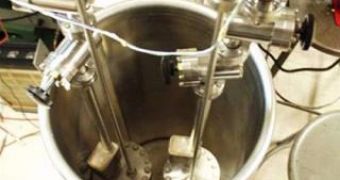Pseudoscience or finally the real thing? Well, that still remains to be seen, but if it indeed works then mankind will be able to generate large amounts of energy at room temperature without worrying about waste or fuel. In the last decades, researchers have been frantically trying to demonstrate that cold fusion is viable, but failed even before they made the first steps into their projects.
When physicists say cold fusion, only one thing comes into their mind. The 1989 demonstration made by Martin Fleischmann and Stanley Pons who had claimed to be able to produce a controlled cold nuclear reaction inside a jar at room temperature. The two had failed to duplicate their experiments and cold fusion fell into disgrace ever since.
On May 22, Professor of Physics Yoshiaki Arata of Osaka University along with Yue-Chang Zhang from the Shianghai Jiotong University ran an experiment in front of 60 people, amongst which other physicists and journalists, an experiment that they claimed to be the first successful demonstration of cold fusion. They forced deuterium gas into a chamber filled with a mixture of palladium and zirconium oxide, thus creating 'pynco' deuterium. The team argues that the dense deuterium then fused and created helium nuclei, plus a fair amount of energy.
As the gas was injected into the chamber, the temperature rose to 70 degrees Celsius, presumably accounting for the energy released during the nuclear fusion reaction. After the gas was turned off, the temperatures inside the chamber remained slightly higher than those near the cell wall for up to 50 hours, which the researchers said to be an effect of the nuclear fusion reaction that took place previously.
The experiment is still to be duplicated, as Akito Takahashi from the Osaka University suggested.
"Arata and Zhang demonstrated very successfully the generation of continuous excess energy heat from ZrO2-nano-Pd sample powders under D2 gas charging and generation of helium-4. The demonstrated live data looked just like data they reported in their published papers. This demonstration showed that the method is highly reproducible", said Takahashi.
Additionally, Takahashi believes that the experiment must be duplicated with large amounts of palladium and zirconium oxide mixtures, so larger amounts of energy would be generated.

 14 DAY TRIAL //
14 DAY TRIAL //